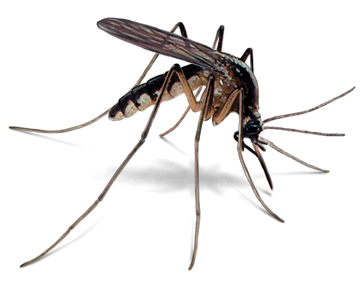Virus evolution:
a framework for
ancient & modern
problems
Sidney Bell (@sidneymbell)
Bedford Lab, University of Washington





car

cat
Reconstructing evolution is a lot like "telephone"
zebra



....

car
cat
Reconstructing evolution is a lot like "telephone"
zebra



Reconstructing evolution is a lot like "telephone"






Evolution can track viral migration and change
Where did this virus come from?
When did interesting traits change?






Epidemiology MS
2015 - 2016
"Where did HIV come from?"
Molecular Bio PhD
2014 - 2018
"How does dengue hide from immunity?"
Nextstrain
Ongoing
Real-time tracking of
viral evolution

Where we're headed
Cross-species transmission can be devastating

HIV has entered human populations >15 times




x2
x2
x12
>40 primate species carry
a unique SIV
How often do SIVs switch host species?



?
?
?

Viral phylogenies show
history and migration

Color = host species
Cross-species transmission looks
like color changes
(Bell & Bedford, PLoS Pathog., 2017)
Integrating over uncertainty:
~1,000 sequences
~24,000 trees
(Bell & Bedford, PLoS Pathog., 2017)
Viral phylogenies show
history and migration


SIVs have been adapting to new hosts for millions of years
(Bell & Bedford, PLoS Pathog., 2017)
Virus evolution
is also a powerful framework for answering modern questions
Dengue is a mosquito-borne virus
that kills 15,000 children annually

There are 4 serotypes of dengue, each containing substantial genetic diversity

DENV1
DENV3
DENV4
DENV2


Early expansion 1850 - 1950

Rapid expansion since 1950
Local circulation since 1700s
Each serotype has recently expanded geographically
Serotype cocirculation
makes dengue a major public health concern






Lifelong protection
Temporary
cross-protection
Initial
response
Immunity is both friend and foe





Lifelong protection
After
1-3 yrs



Increased risk
Immunity is both friend and foe

Immunity
friend vs. foe
depends on
"antigenic distance"
"Antigenic distance" example:
Why you need a new flu shot every year







Measles
Lifelong protection
"Antigenically uniform"
Flu
"Antigenicallydiverse"
Temporary protection

(Continuing our example)
Genetic change underlies antigenic change
ACTG
ACTT
AGTT



Flu
Antigenic evolution
Genetic
evolution
(Now back to dengue)

DENV antigenic relationships
are poorly understood
Serotypes are genetically distinct
Clades are genetically distinct
Serotypes are antigenically distinct
Are clades antigenically distinct?
≠
?




≠


≠


Titers approximate pairwise
antigenic distance






Experimentally measure how well sera recognizes each virus



Sera produced by 1st infection
Test viruses
Titers approximate pairwise
antigenic distance






| 0 | ||
| 0 | 2 | |
| 0 |
1
2



2-fold
change
4-fold
change
4-fold
change
Antigenic Distance
log2(Titer)
Distance
Dengue serotypes look antigenically diverse

NHP sera; 3 months post primary infection
= 2-fold change in titer
Katzelnick et al, Science 2015
How? Impact?
How do
dengue genotypes
map to
antigenic phenotypes?
Can we predict antigenic phenotypes from virus genotypes?

Phylogenies can describe both genetic and antigenic relationships

Quantify antigenic change along each branch,
Neher et al, PNAS 2016






| 0 | 1 | 2 |
| 0 | 2 | |
| 0 |


Titer
between
&





+ avidity + potency

Does within-serotype genetic diversity change antigenic phenotypes?
Interserotype hypothesis
Full tree hypothesis


Interpolate across the tree
to estimate antigenic relationships

Learn these
Minimize
this
Predict titers
dTiter on each branch
Virus
avidity
Serum
potency
Predict titers
Squared Error
Minimize
this
L1 norm on branch effects
L2 norm on virus avidity & serum potency
| Pearson R | 0.79 |
| Abs. Error | 0.71 |
| Sqr. Error | 0.87 |

| 0.90 |
| 0.61 |
| 0.61 |
Between-serotype variation explains most of
dengue antigenic phenotypes
Within-serotype variation significantly contributes to dengue antigenic phenotypes
Test Error
Interserotype hypothesis
Full tree hypothesis
Each serotype of dengue contains multiple
distinct antigenic phenotypes



Log2 titer distance from root
DENV1
DENV3
DENV4
DENV2
>= 10 distinct phenotypes
Genetic distance is associated
with antigenic distance
Homotypic genotypes
Heterotypic genotypes

How does
antigenic diversity impact dengue population dynamics?
Serotypes cycle through populations
Genotypes



Does antigenic novelty contribute to dengue clade turnover?

Population susceptibility:


Previously circulating:





Population
immunity:













Clade growth:


Predict clade growth
from antigenic novelty
Lukzsa and Lassig, Nature, 2014
Growth rate @
next 5 years
How antigenically distant*
is from what has recently circulated?
* from
interserotype
or
full-tree
titer model


Does antigenic novelty contribute
to dengue fitness?
Relative frequency of j
Waning immunity
Antigenic distance between i and j
Lukzsa and Lassig, Nature, 2014
Does antigenic novelty contribute
to dengue fitness?
Relative frequency of j
Waning immunity
Probability of protection from i
given exposure to j
Lukzsa and Lassig, Nature, 2014
Antigenic novelty significantly
contributes to dengue viral fitness

| Pearson R | 0.88 | 0.87 |
Interserotype antigenic phenotypes
drive population dynamics
Interserotype model
Full tree model
Summary:
1: Dengue serotypes are moderately antigenic diverse
2: Serotype-level antigenic relationships
drive dengue
population dynamics



Future Work


We can predict which clades will be dominant.
Can this help predict
epidemic severity?


Turning theory into practice
via rapid dissemination
DENV2


Log2 titer distance from Sanofi vaccine

Turning theory into practice
via rapid dissemination
Ongoing Collaborations


Ted Gobillot, UW
High-throughput characterization of Zika & DENV antibodies
Frank Wen, UChicago
Vaccine-driven influenza evolution
Nextstrain
Real-time analysis of viral evolution

as a teaching tool for



Acknowledgements






Trevor Bedford, Leah Katzelnick, Sarah Hilton, Colin Megill
Gytis Dudas, James Hadfield, John Huddleston, Alli Black, Barney Potter, Louise Moncla
Richard Neher, David Shaw, Duncan Ralph
Erick Matsen, Jesse Bloom, Julie Overbaugh,
Adam Geballe, Daniela Witten
Slides: The Noun Project & RevealJS
Questions?
github.com/sidneymbell/talks
.org/dengue
@sidneymbell

chan-zuckerberg-2018
By Sidney Bell
chan-zuckerberg-2018
- 1,879



